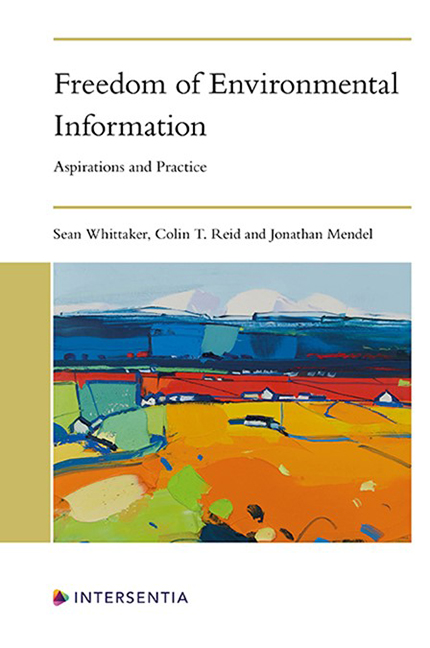Chapter 6 - Non-Human Actors
Published online by Cambridge University Press: 15 November 2023
Summary
The starting point for the creation of a right to environmental information is “the need to protect, preserve and improve the state of the environment and to ensure sustainable and environmentally sound development”. This need has become all the more pressing at a time of significant anthropogenic environmental change. However, the right of access to environmental information is framed in a way that primarily emphasises the concerns and needs of humanity. While this anthropocentric framing influences the interpretation of the right’s environmental aims, it also emphasises the role of human actors, particularly users of the right, in the operation of the right itself. Yet human actors are not the only actors that exert influence over how the right is guaranteed, implemented and utilised in practice; non-human actors influence how the right to environmental information is guaranteed. Notable examples of such actors include technology and the law, which influence the interactions between other actors, and the environment itself, an actor given limited attention both by the right itself and its implementing legal instruments. The role and impact of these actors remains unexplored, to the detriment both of how the right is implemented in practice and of how it seeks to achieve and understand its own environmental and participative aims. This chapter will discuss how to give better consideration to these actors and, in particular, will argue for the need to give more attention to the environment as an actor.
INTRODUCTION
Actor-Network Theory is concerned with the “the tracing of associations” between different actors in order to understand how they each engage with and interact with each other within society. It is these associations between the different actors which construct the “actor-network”, a network which is built up through the connections made between different actors. Through the construction of the actor-network, Actor-Network Theory provides a useful perspective to analyse and understand the operation of various aspects of society, including the right of access to environmental information.
- Type
- Chapter
- Information
- Freedom of Environmental InformationAspirations and Practice, pp. 169 - 206Publisher: IntersentiaPrint publication year: 2023



